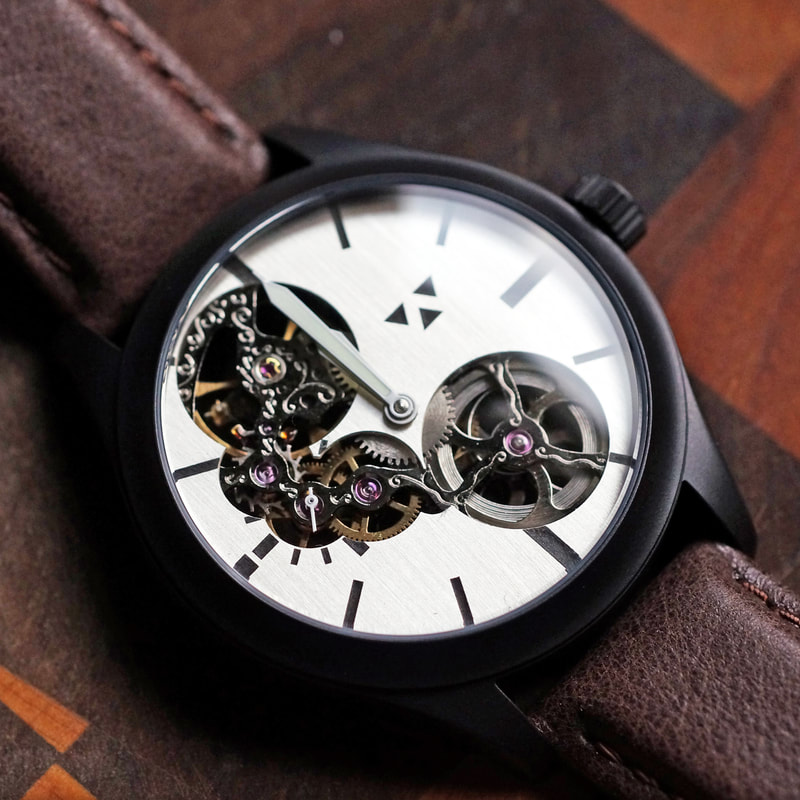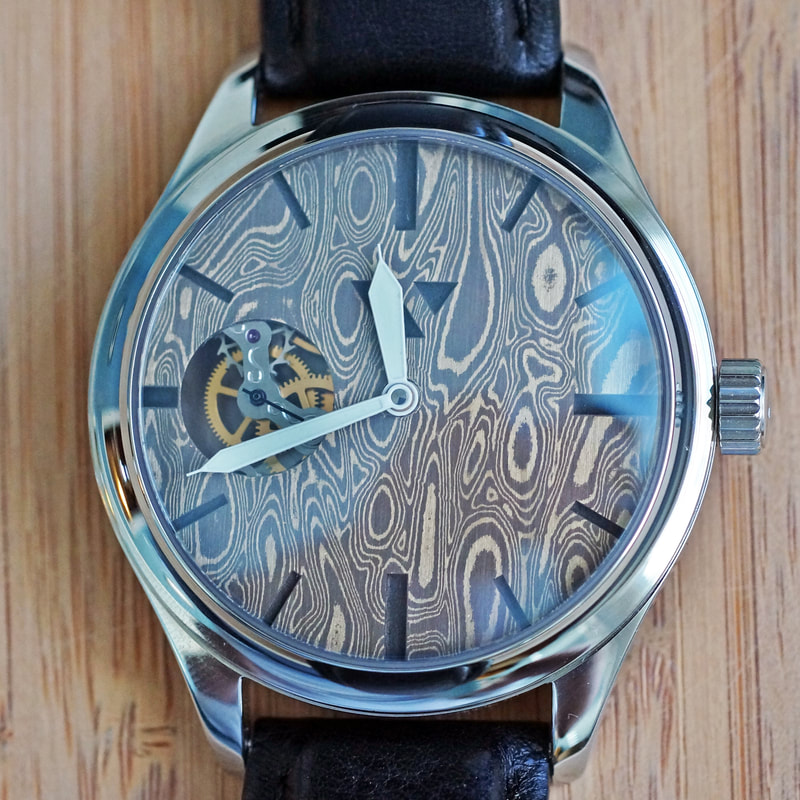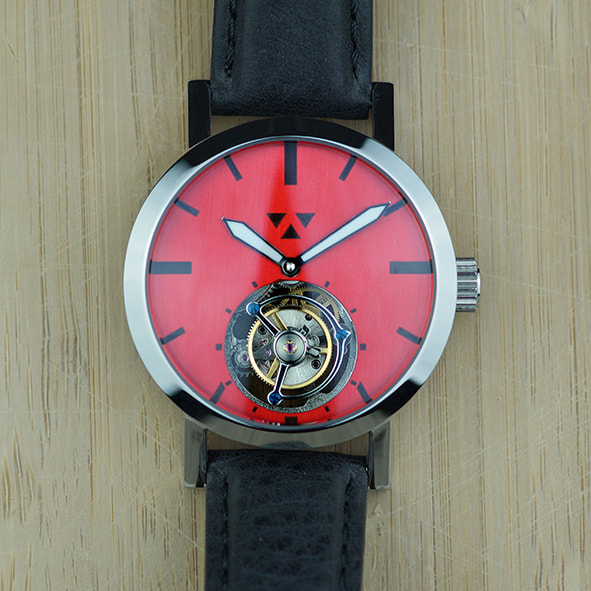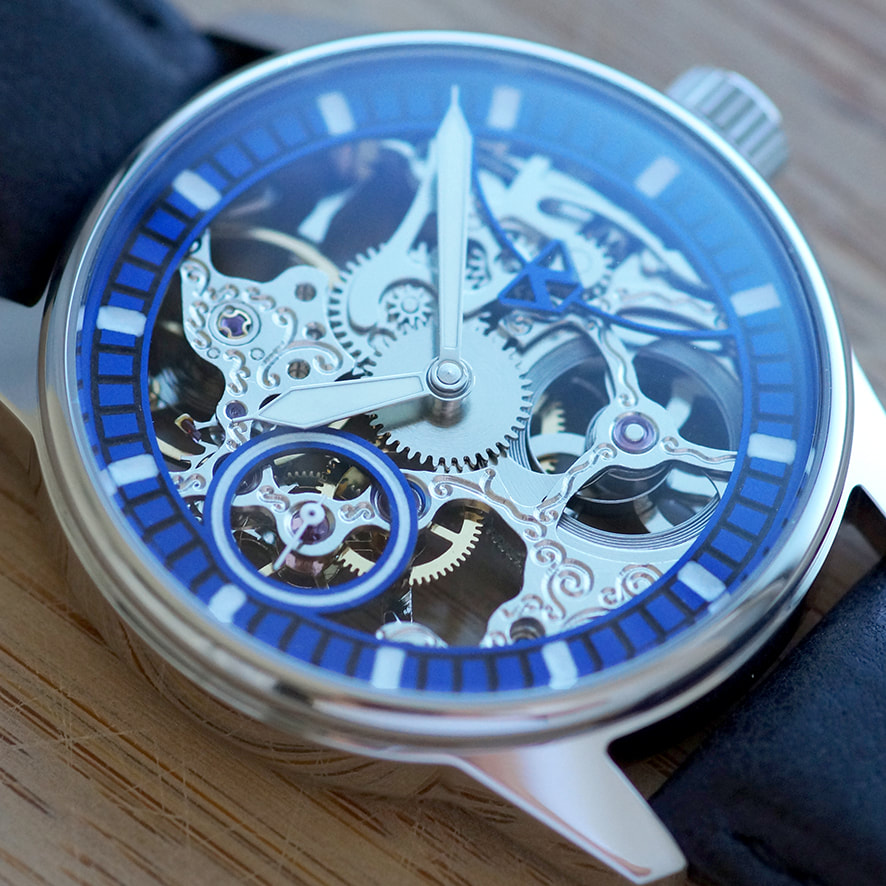Dial materialS and colours
This section is intended to give you an insight into the somewhat unique world of dials at Wilk Watchworks. This information only applies to our Tier 2 timepieces.
Scott Wilk has developed techniques for producing a unique style of dials in his watches – not typical in the world of horology. Mostly metallic, “ … as my background includes the art of the metalsmith – fashioning handcrafted items from metal.”
Dials can be made from a range of metals, typically brass, bronze, copper, fine silver, mokume-gane, and niobium.
Every dial that has the possibility of oxidation, or tarnishing, is coated with a museum quality wax to seal the surface and help prevent the metal from changing colour, but this is not a guarantee that, over time, the colour will not develop a slight “patina.”
Copper
This is just copper, symbol Cu . This metal is used "naked" for it’s coppery colour.
Brass
Brass is an alloy of copper and zinc. The majority of the dials in the Wilk Watchworks wristwatches are made of brass because of the various finishes that can be obtained, both "naked" brass and oxidized brass.
Bronze
There are lots of different alloys that are called bronze, but Scott usually uses an alloy of copper and tin - CuSn8. Again, like copper and brass, it is used because of it’s colour, which changes over time as it oxidizes.
Fine Silver
We describe the silver used as ‘fine’ rather than ‘sterling’. The reason is that these are two very different metals. Fine silver is pure silver, 99.99% pure, at least. Sterling silver is an alloy made of 92.5% silver and 7.5% copper. Fine silver is used because it does not tarnish nearly as readily as sterling silver.
Mokume-gane
Mokume-gane is a special technique used to create a layered laminated metal, originally developed in Japan, the end product being similar to Damascus steel. (If you’re interested, there’s a decent Wikipedia article about it here.) The layers can consist of all sorts of different types of metal, but generally, the metals used are silver, copper, bronze or brass. Typically, Scott uses a copper and silver mokume-gane laminate for the most part, but is not averse to mokume-gane made with gold, platinum, and/or palladium. No two pieces of mokume-gane are exactly the same, but similar effects can be duplicated. Usually, the metal is oxidized to enhance the pattern.
Solvent Dye Colouring Technique
The solvent dye that Scott uses has been specially formulated for use on metal. It yields bright, stable, UV resistant colours which can be applied in a number of different ways, each giving their own effect. This technique enables bright reds and oranges to be achieved.
Niobium
Niobium, formerly called columbium, is a chemical element with the symbol Nb. It is a soft, grey, ductile transition metal, which is often found in the mineral pyrochlore, the main commercial source for niobium and other metals in the columbite group. The name niobium comes from Greek mythology: Niobe, daughter of Tantalus. (Source: wikipedia).
Scott started using niobium as a way to achieve colour, but with a different look from painting or printing colours, as is the norm in the watch industry. The process used to achieve bright and lustrous colours on niobium is called anodizing. It is essentially a process in which electricity is run through the dial in a water bath. Different voltages are used to achieve different colours.
© Wilk Watchworks 2023




